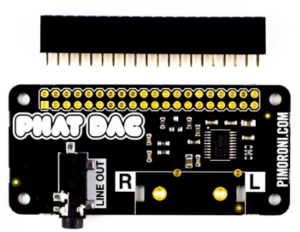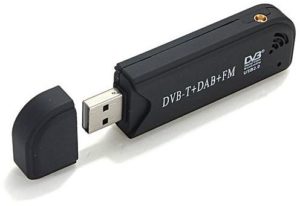Did you ever stop to think about all those radio waves flying around us all the time? Of course you didn’t. That’s why you have me!


Did you ever stop to think about all those radio waves flying around us all the time? Of course you didn’t. That’s why you have me!

Was walking around Target and saw an inexpensive remote outlet which I was pretty sure I could perform the Replay Attack on.
 The Replay Attack is when you record a signal from something and transmit it back to perform the operation.
The Replay Attack is when you record a signal from something and transmit it back to perform the operation.
These devices typically transmit around 433 MHz and have no encryption of any kind whatsoever. Just a simple transmit burst for on and off functions.
What’s a Spyserver? And why would you want one? Spyserver is a program for a Software Defined Radio (SDR) that allows you to access that radio from anywhere. It also allows you to share your radio from anywhere and you can likewise share other people’s SDR radios. Why would you want to do that?
First when the word “radio” comes to mind we tend to think of AM or FM radio only. An SDR device is so much more than that. It can literally listen to things from 0 kHz to 2 GHz or so. That’s EVERYTHING that you can think of that uses a radio signal. Short Wave, CB, Ham, pagers (yep they still use pagers), Police, Fire, EMS, the Space Shuttle flying overhead (not kidding), the tire pressure monitor sensors on your car, tracking aircraft, tracking ships, tracking weather balloons…………the list is almost endless.
I REALLY struggled hard to learn to use OP25 and once I figured It out I made a simple tutorial for myself to recreate on other computers and for others to use. On my blog it is one of the more active pages and almost every week I get emails from people requesting help getting it working. This is the page of instructions I made: (there are a couple more pages that are Raspberry Pi specific but you’ll have to poke around my blog to find them).
OP25 For Dummies – Or how to build a police scanner for $30 (Part 1)
I would LOVE to help everybody but alas, I met a hot neighbor lady walking dogs a few months back and she’s cutting into my geek time! Trust me when I say that I’m not complaining!
Most of the time I find that many users are installing Ubuntu under Virtualbox in either Windows or on a Mac and this is one of the most common errors:
It was the best of decoders, it was the worst of decoders……… As you can tell I’m quite the literate bastard and highly up to speed on my Dickens.
I love digital signal decoding as it is almost something that you seemingly aren’t supposed to do, hence the attraction of it all. There are several hunks of software that can decode digital signals and each one has it’s strength and weaknesses. The ones I have dabbled around with are:
There are certainly others, not to mention maybe the most powerful one (but by far the one that requires the most geek foo) is GNURadio.
One of my favorite programs for decoding digital audio is DSDPlus. I’ve been using it a couple of years to dissect and decode SINGLE digital signals. Like for instance if I’m in the airport or airport hotel I can listen to DMR radio where the baggage handlers are talking to each other, or the mall cops are planning how to be real cops. Or you can hear the hotel staff on their radios which is sometimes really fun.
BUT…….DSDPlus also follows Digital Trunked Radio. That is where there is a Control Channel which is monitored and then the calls are “trunked” to available frequencies allowing for more users to use the system without confusion. Also users can be placed into Talk Groups which keeps down the confusion even more. Entire cities can use one radio system to control municipal services such as Police, Fire, EMS, Public Works, Events, etc.
Hurricane Florence coming! You’ve all seen weather radios and you’ve all seen they generally cost $50 or more. On a good day you can find one for $35 or so.
The goal is to receive NOAA which transmits on the following 7 frequencies. There will be one or two specific to your area. The frequencies below are in MegaHertz (MHz).

So I bought the Uniden SDS100 hardware scanner, and I love it. But it cost $700, and then I added DMR decoding for $60, and NXDN decoding for $50. So I’m into this in a big way. The SDS100 is POWERFUL. It is not a toy by any stretch of the imagination. It comes with free control software called Sentinel (yeah the download is hard to find on that page). Sentinel is adequate for managing favorites and reading and writing to the scanner and it is all you NEED.
However I stumbled across this hunk of software called Proscan which looked interesting but it also costs $50. Where does the cost with this scanner end? Well, like most programs Proscan has a 30 day trial version so I gave it a shot. After playing with it for like an hour I knew it was worth the cost so I bought it. It does NOT disappoint.
Ok I’ve been on a roll playing with OP25 and Raspberry Pi and one thing I can tell you is that the onboard audio from the bcm2835 chip is somewhat inadequate. Oh, it works but you’re going to need a powered speaker or really efficient headphones, and even then it is a bit light.
What to do?

Add a USB Digital to Analog converter (DAC). Depicted here is a HiFiMeDIY USB DAC. This is a tad bit expensive for this project but I have like 4 of these things laying around the house. They are ridiculously good. If you like music slap one of these bad boys on your laptop in the hotel room and the quality of your music will improve ten fold.
That’s not what we’re doing here though.
There are a LOT of USB DAC’s out there and some cost just a few dollars. HiFiMeDIY makes some cheaper ones as well that are way more than enough for improving your OP25 sound.

The Phat DAC costs $15 but you’ll have to solder header pins on yourself. That may be the cheapest, and best route. It has the form factor for the Raspberry Pi Zero but it works on all the Pi’s.
In my last part I set the Pi up to stream to Broadcastify. In this one we are just going to pump audio out through the headphone jack.
 I’m doing this with an old generic black RTL-SDR and it works and it works fine but it is kind of susceptible to heat and cold and the ppm correction drifts a bit. I really recommend getting a v3 RTL-SDR or a NESDR Smart as they seem more stable. At any rate it doesn’t matter, you’ll just have to deal with the drift if you have any.
I’m doing this with an old generic black RTL-SDR and it works and it works fine but it is kind of susceptible to heat and cold and the ppm correction drifts a bit. I really recommend getting a v3 RTL-SDR or a NESDR Smart as they seem more stable. At any rate it doesn’t matter, you’ll just have to deal with the drift if you have any.
My assumption here is that you have Raspbian installed on at least a Pi 3. I haven’t tried it on a lesser Pi but I had it on a Pi 3 B + and then I found a couple Pi 3 B’s laying around and figured I’d reclaim my B+ for another project on another day. OP25 runs fine on the Pi 3.